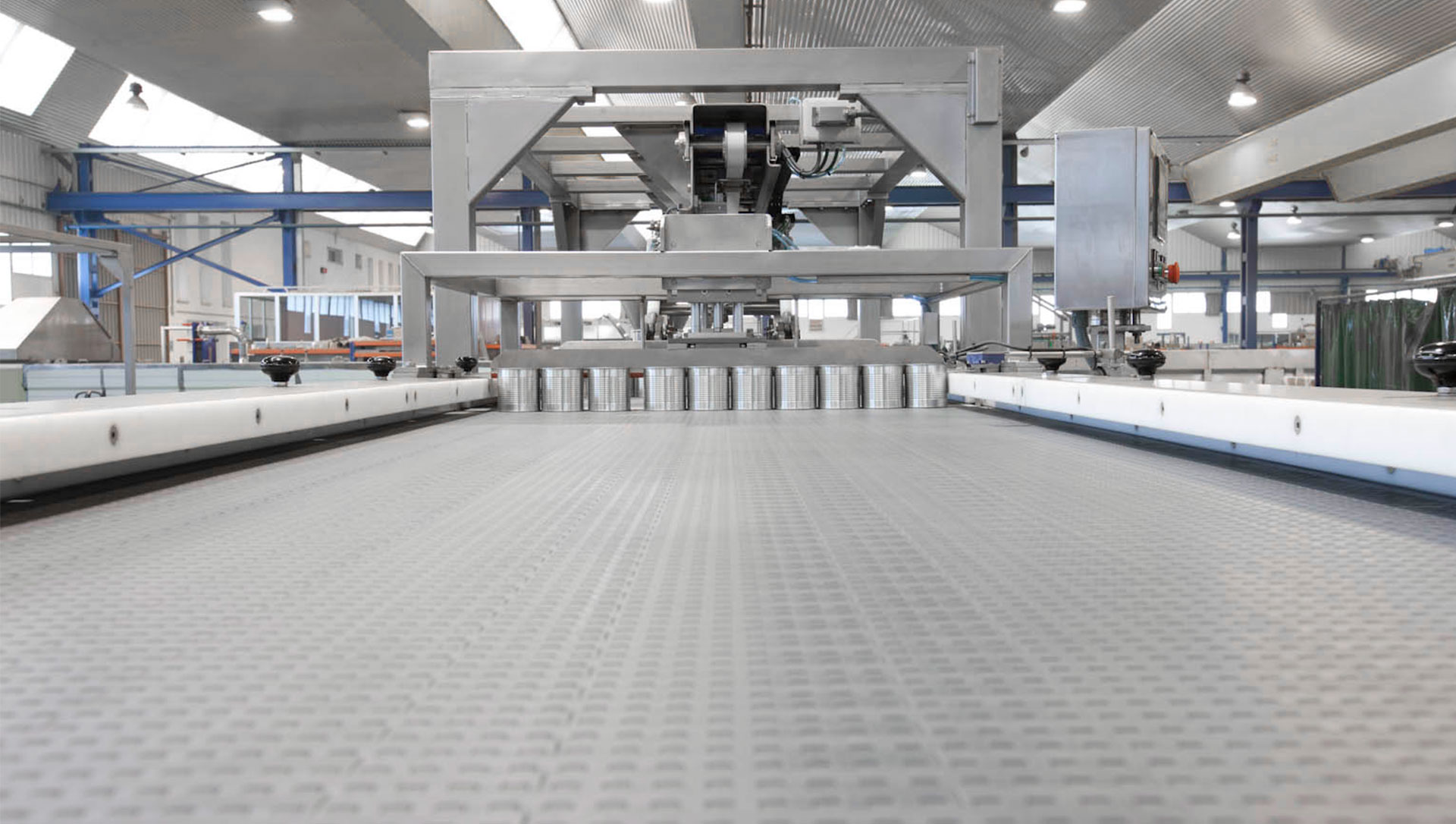In the food industry, palletizing, depalletizing and conveying systems are essential for the efficient and safe handling of packaged products. These systems automate the process of stacking and unstacking containers on pallets, optimizing production and minimizing the risk of damage.
Types of Palletizers:
- Robotic Palletizers
- Features: They use robotic arms with holding tools (tweezers, vacuum, claws). Highly flexible and programmable.
- Applications: Suitable for glass bottles, metal cans, boxes and other containers. Used in industries with high precision and quick format changes.
- Benefits: High precision, adaptability, ability to handle fragile packaging, flexibility for different products and configurations.
- Paletizadores de Nivel Bajo
- Features: Containers are loaded from ground level and stacked on a pallet that rises as layers are added.
- Applications: Mainly for products in boxes or trays.
- Benefits: Economical, easy to operate, suitable for production lines with lower speeds.
- High Level Palletizers
- Features: Containers are fed from an elevated position and stacked on a pallet at the bottom.
- Applications: Ideal for high-speed lines and products in boxes or trays.
- Benefits: High speed, ability to handle large volumes of products.
- Magnetic Plate Palletizers
- Features: They use magnetic plates to lift and stack metal containers on pallets.
- Applications: Specific for cans and other metal containers.
- Benefits: High efficiency in the handling of metal containers.
- Placement Palletizers
- Features: They use clamping mechanisms (clamps, vacuum) to precisely pick up and place containers on pallets.
- Applications: Suitable for fragile or irregularly shaped products.
- Benefits: Greater care and precision in product handling.
These automated systems allow efficient and safe handling of containers, improving productivity and reducing manual effort.
Types of Depalletizers:
- Robotic Depalletizers
- Features: Robotic arms depalletize containers from the pallet and place them on a conveyor belt.
- Applications: Suitable for a variety of packaging. Flexible for format changes.
- Benefits: High flexibility, ability to handle different sizes and shapes of containers.
- Suction/Vacuum Depalletizers
- Features: They use vacuum suction cups to lift and move containers from the pallet to a conveyor belt.
- Applications: Suitable for glass bottles and other fragile containers.
- Benefits: Greater care and precision in handling fragile products.
- Despaletizadores de Gancho o Pinza
- Features: They use hooks or clamps to hold and move containers from the pallet.
- Applications: Suitable for products with irregular shapes or difficult to handle.
- Benefits: High precision, ability to handle difficult containers.
- Push Depalletizers
- Features: They push rows or layers of containers from the pallet onto a conveyor belt.
- Applications: Mainly for products in boxes or trays.
- Benefits: Simple, efficient for production lines with lower speeds.
- Magnetic Plate Depalletizers
- Features: They use magnetic plates to lift and move metal containers from the pallet to a conveyor belt.
- Applications: Specific for cans and other metal containers.
- Benefits: High efficiency in the handling of metal containers.
Each type of palletizer/depalletizer has its advantages and is chosen according to the specific needs of the production line, the type of product and the production volume.
Container movement
The movement of containers on the packaging line is essential to transport empty containers through the different stages of the process. This includes conveyors and accumulators that allow a constant and controlled flow of containers. Conveyors are systems that move containers from one location to another, and accumulators can temporarily accumulate containers to ensure a constant flow through the line.
- Conveyors
- Roller conveyors: They use rollers to move containers.
- Belt conveyors: They use conveyor belts to move containers.
- Chain conveyors: Use chains to transport containers, often in heavier applications.
- Accumulators: Accumulators are devices that temporarily store containers, allowing a constant flow to be maintained in the line, even if an interruption occurs at one point in the packaging line.
Depalletizers, palletizers and container movement systems are critical components at the end of the line in the food industry, as they help automate and optimize the packaging process, increasing efficiency and reducing downtime in production.
Starting from specific specifications in each case, we carry out the design and comprehensive production of Complete Lines that cover the specific needs of each client. Tell us about your needs and we will carry out a personalized project that adapts to your requirements. If you wish, we can work together from the beginning of the activity, renew your equipment or adapt to your new needs. Together, we are stronger. Each Project is unique and personal. Our capacity and experience enable us to tackle any possible project within the Food sector.
